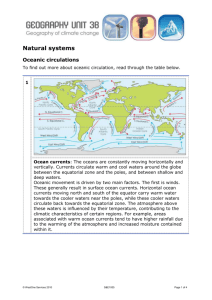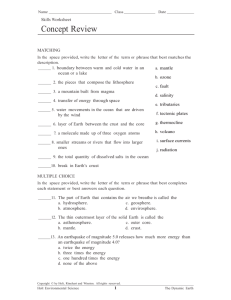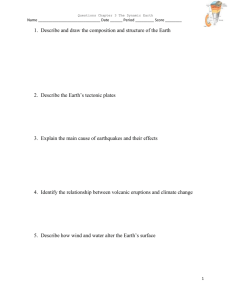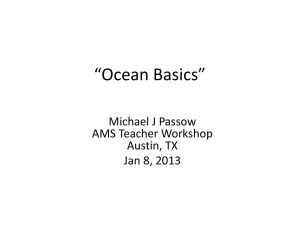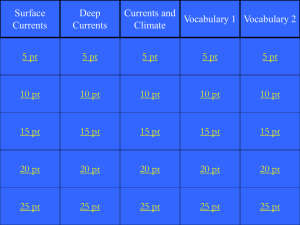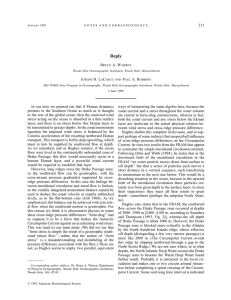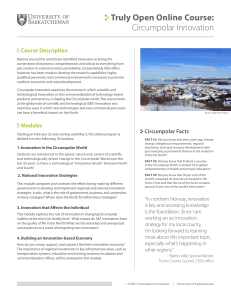THINKING CRITICALLY Circumpolar Currents and Ocean
advertisement
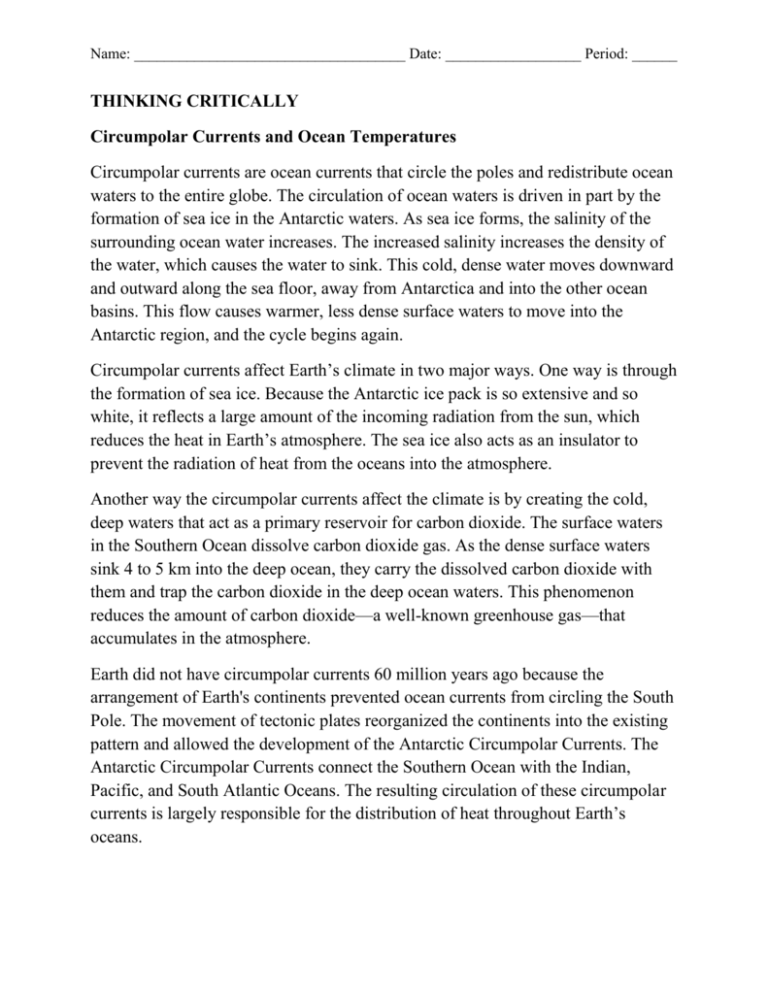
Name: ____________________________________ Date: __________________ Period: ______ THINKING CRITICALLY Circumpolar Currents and Ocean Temperatures Circumpolar currents are ocean currents that circle the poles and redistribute ocean waters to the entire globe. The circulation of ocean waters is driven in part by the formation of sea ice in the Antarctic waters. As sea ice forms, the salinity of the surrounding ocean water increases. The increased salinity increases the density of the water, which causes the water to sink. This cold, dense water moves downward and outward along the sea floor, away from Antarctica and into the other ocean basins. This flow causes warmer, less dense surface waters to move into the Antarctic region, and the cycle begins again. Circumpolar currents affect Earth’s climate in two major ways. One way is through the formation of sea ice. Because the Antarctic ice pack is so extensive and so white, it reflects a large amount of the incoming radiation from the sun, which reduces the heat in Earth’s atmosphere. The sea ice also acts as an insulator to prevent the radiation of heat from the oceans into the atmosphere. Another way the circumpolar currents affect the climate is by creating the cold, deep waters that act as a primary reservoir for carbon dioxide. The surface waters in the Southern Ocean dissolve carbon dioxide gas. As the dense surface waters sink 4 to 5 km into the deep ocean, they carry the dissolved carbon dioxide with them and trap the carbon dioxide in the deep ocean waters. This phenomenon reduces the amount of carbon dioxide—a well-known greenhouse gas—that accumulates in the atmosphere. Earth did not have circumpolar currents 60 million years ago because the arrangement of Earth's continents prevented ocean currents from circling the South Pole. The movement of tectonic plates reorganized the continents into the existing pattern and allowed the development of the Antarctic Circumpolar Currents. The Antarctic Circumpolar Currents connect the Southern Ocean with the Indian, Pacific, and South Atlantic Oceans. The resulting circulation of these circumpolar currents is largely responsible for the distribution of heat throughout Earth’s oceans. Name: ____________________________________ Date: __________________ Period: ______ Your Turn to Think 1. The temperature of the deep ocean generally hovers around freezing (2°C to 3°C). However, scientists have discovered that about 60 million years ago, the temperature of the deep sea was 20°C. That’s just a little cooler than average room temperature (24°C)! What could be responsible for the change in ocean temperature described here? _________________________________________ ________________________________________________________________ ________________________________________________________________ ________________________________________________________________ ________________________________________________________________ 2. What evidence could you look for to support your hypothesis from question 1? Where would you most likely find that evidence? ________________________ ________________________________________________________________ ________________________________________________________________ ________________________________________________________________ ________________________________________________________________ 3. Based on the information in this passage, what might be the result of a cessation of circumpolar circulation? Explain your answer. 4. Many scientists believe that in 250 million years, the tectonic plates might be arranged into a new supercontinent. How would this continental arrangement affect climate? ______ ________________________________________________________________ ________________________________________________________________ ________________________________________________________________ ________________________________________________________________
